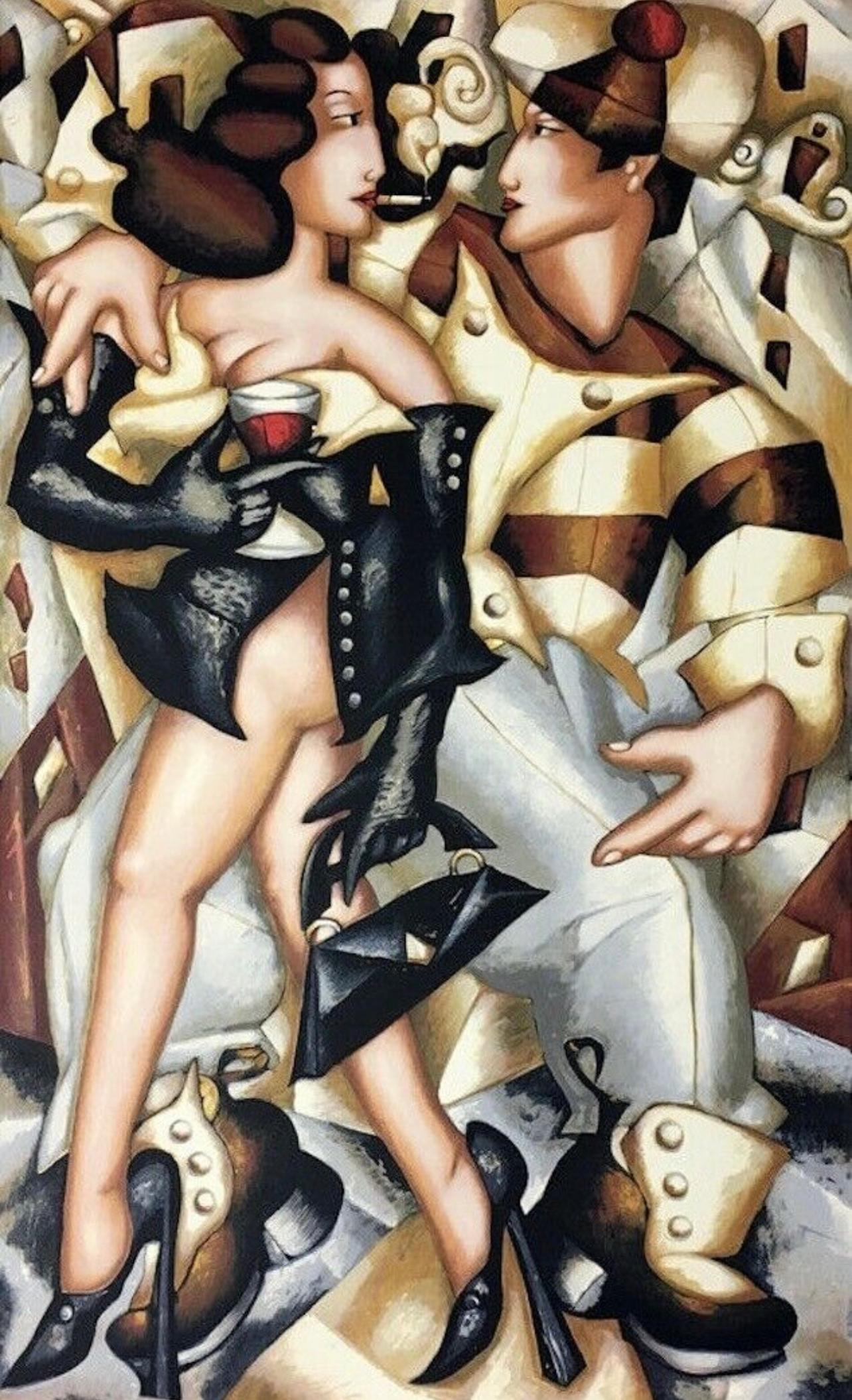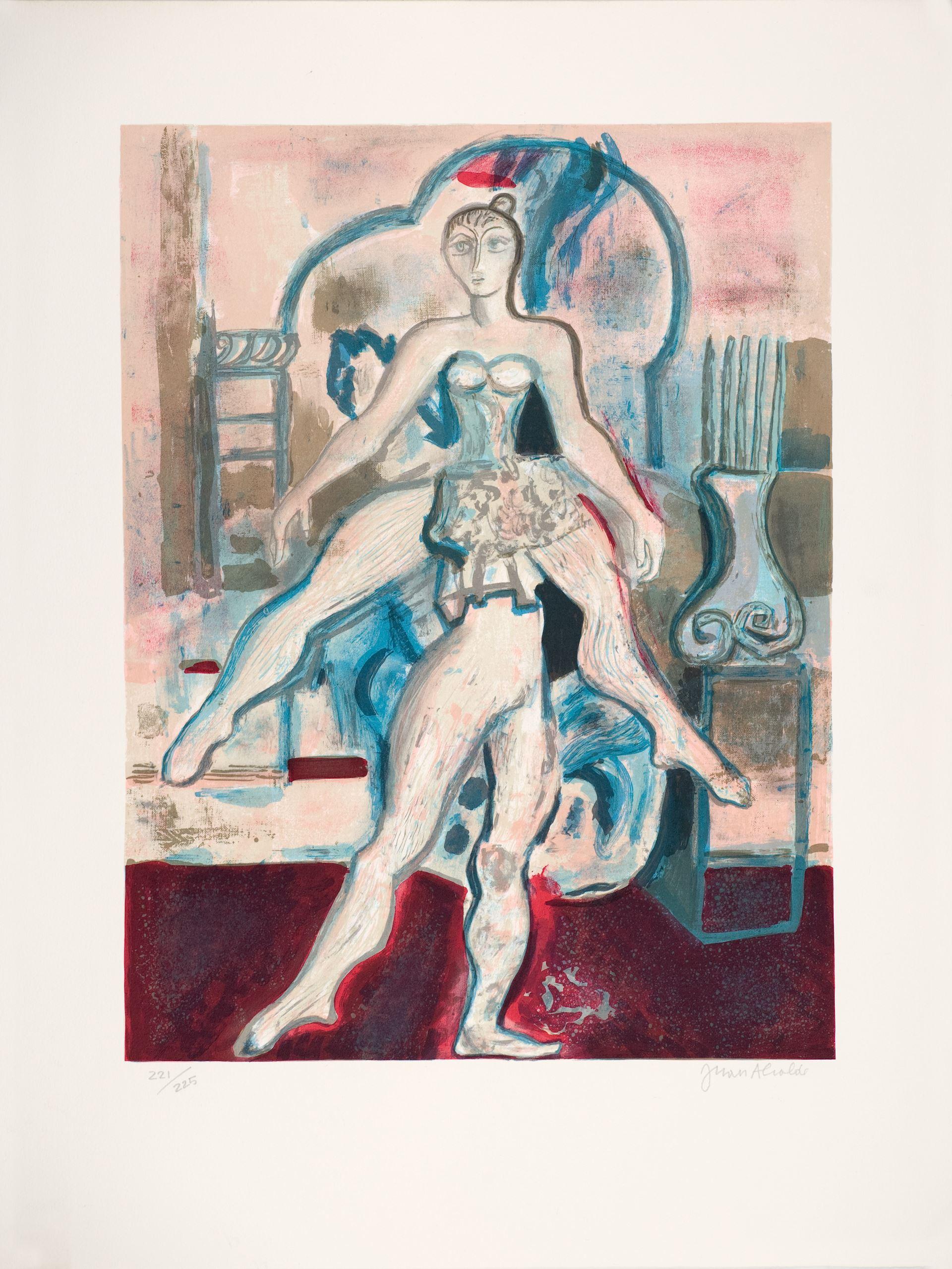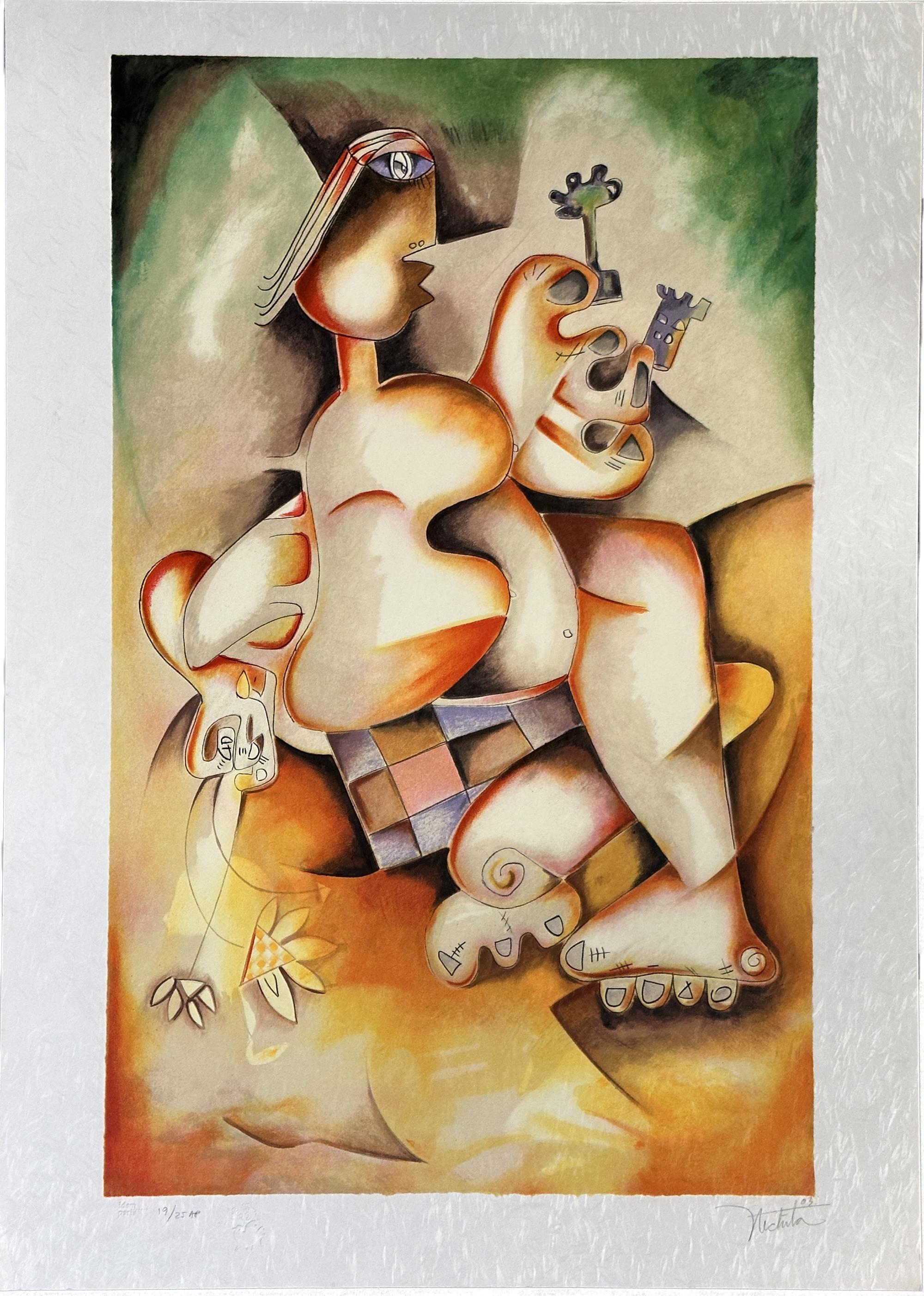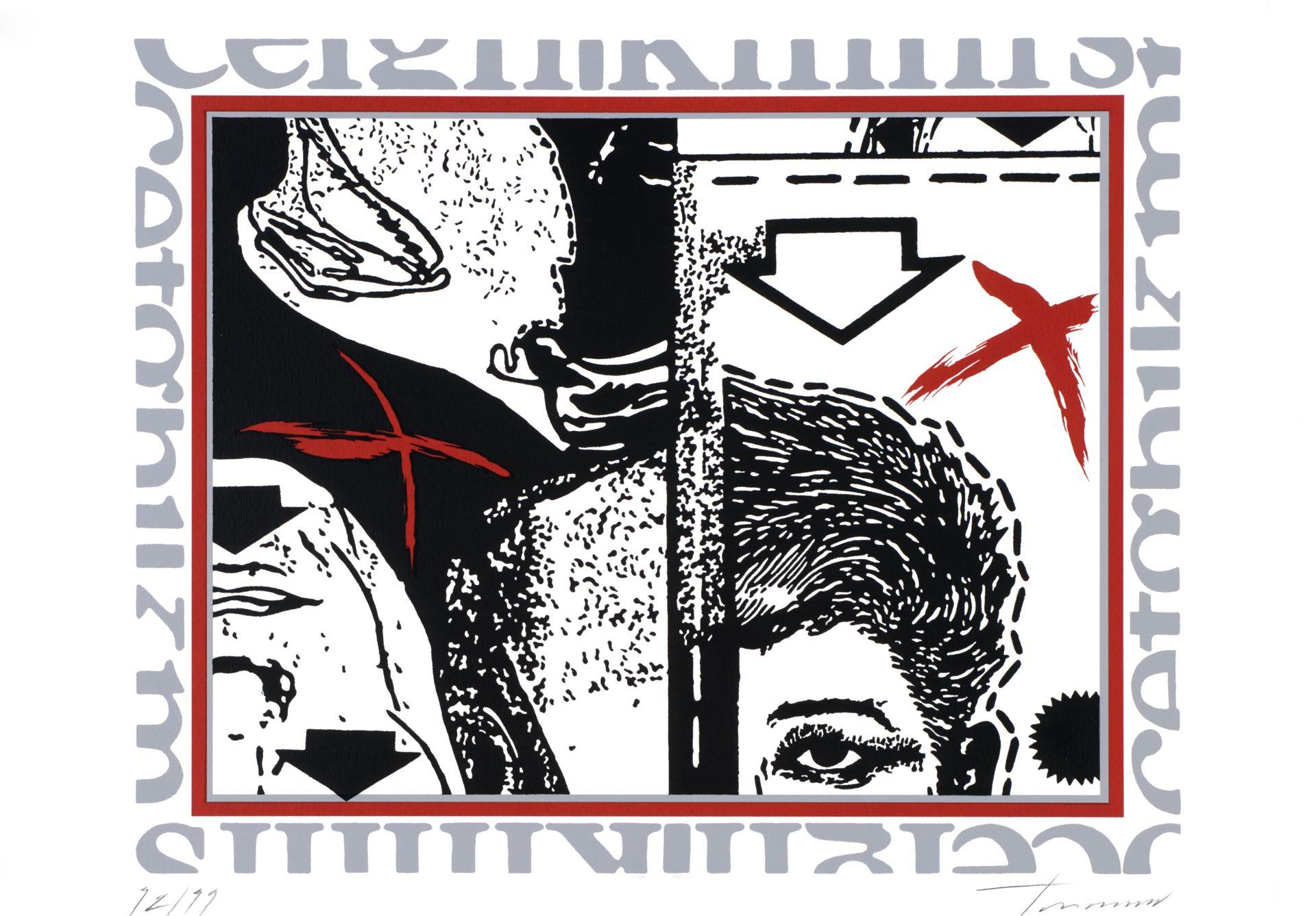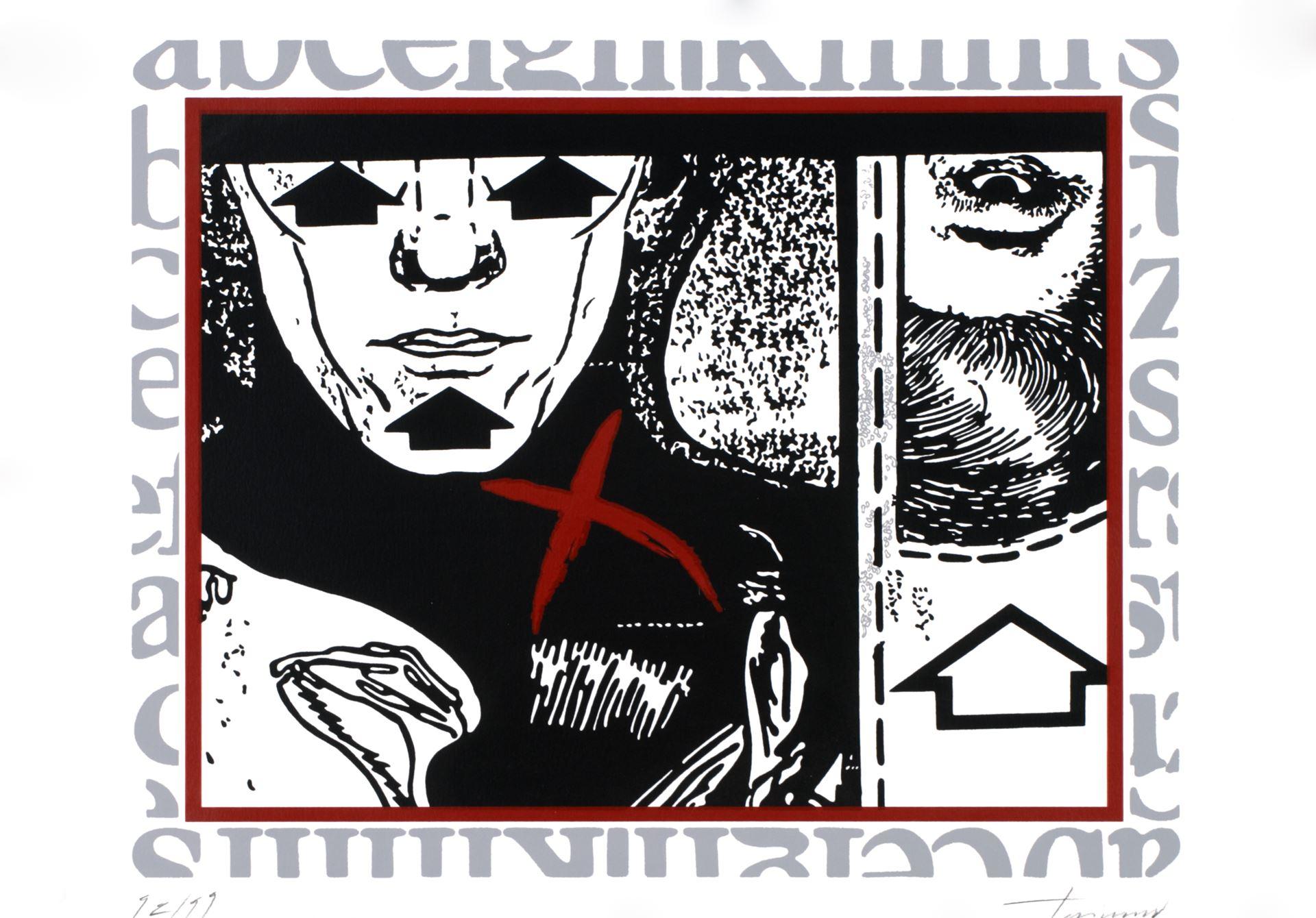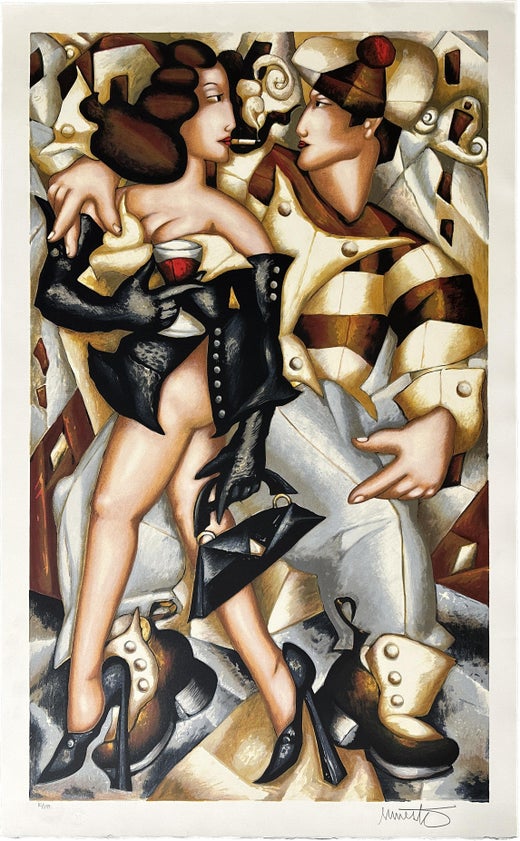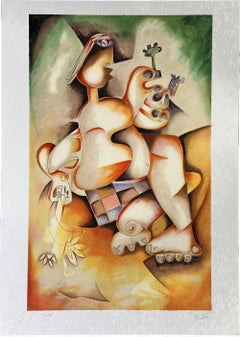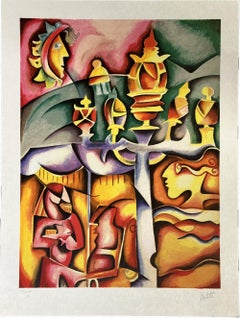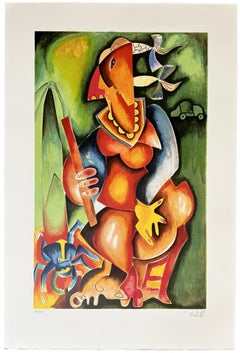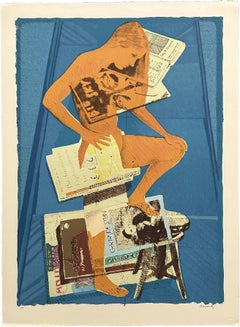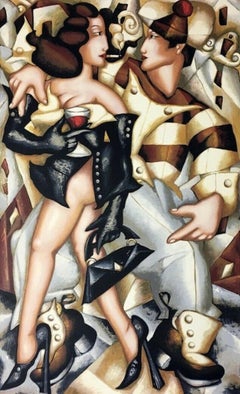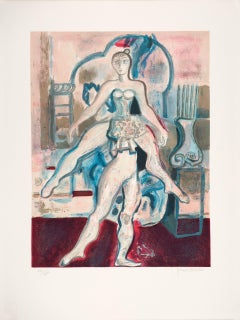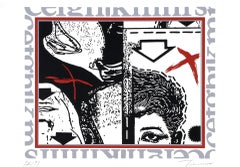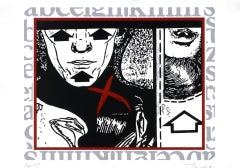Items Similar to Amsterdam Signed Limited Edition Lithograph Large
Want more images or videos?
Request additional images or videos from the seller
1 of 8
ErnestoAmsterdam Signed Limited Edition Lithograph Large1990
1990
$1,200
£934.28
€1,062.55
CA$1,726.16
A$1,896.50
CHF 991.12
MX$22,617.32
NOK 12,550.28
SEK 11,691.65
DKK 7,939.84
About the Item
Artist Name: Ernesto Amsterdam
Title: Capturing the Essence of Amsterdam:
Medium Type: Lithograph on Arches Archival Pape
Size-Width Size-Height: 46½'' x 28¾'' inches
Signed Edition Size: Signed in pencil and marked 112/299
Ernesto was born in Portugal but at 18, his interest in painting carried him to France where he was accepted in the renowned "School of Fine Arts", Paris.After his graduation, he decided to establish his studio in the centre of Paris. His life in Paris has a great influence upon his works; he has totally absorbed the atmosphere and the typical images of Parisian life-style.The patron of an important art foundation and chairman of an international insurance company in France has said, "His maturity is evident and he can be considered as one of the great masters of tomorrow.”
- Creator:Ernesto (1960)
- Creation Year:1990
- Dimensions:Height: 46.5 in (118.11 cm)Width: 28.75 in (73.03 cm)Depth: 1 in (2.54 cm)
- Medium:
- Movement & Style:
- Period:
- Condition:
- Gallery Location:Rochester Hills, MI
- Reference Number:1stDibs: LU2335213747132
Ernesto
Ernesto is a Portuguese artist whose work primarily focuses on the Parisian lifestyle. His adjournment to Paris in his early years of life is said to have influenced his style and concepts greatly. His work reflects an enigmatic, yet jubilant style that is extremely innovative within his intimate scenes. Ernesto is considered one of the great masters of tomorrow.
About the Seller
4.8
Vetted Professional Seller
Every seller passes strict standards for authenticity and reliability
Established in 2000
1stDibs seller since 2023
89 sales on 1stDibs
Typical response time: <1 hour
- ShippingRetrieving quote...Shipping from: Rochester Hills, MI
- Return Policy
More From This Seller
View AllShow Me That You Care… 2003 Signed Limited Edition Lithograph
By Alexandra Nechita
Located in Rochester Hills, MI
Alexandra Nechita
2003
"Show me that you care "
Print - Lithograph on Japan rice paper
28¼'' x 20½'' inches
Edition: signed in pencil and marked 19/25 AP
Alexandra Nechita began drawing at the age of two. At seven, Alexandra was painting with oils and acrylics, and her first exhibit was a one-woman (child) show held at a Los Angeles public library...
Category
Early 2000s Abstract Abstract Prints
Materials
Lithograph
$1,400 Sale Price
20% Off
Restless Paris 2003 Signed Limited Edition Lithograph
By Alexandra Nechita
Located in Rochester Hills, MI
Alexandra Nechita
2003
"Restless Paris"
Print - Lithograph on Japan rice paper
27'' x 20½'' inches
Edition: signed in pencil and marked 17/25 AP
Alexandra Nechita began drawing at the age of two. At seven, Alexandra was painting with oils and acrylics, and her first exhibit was a one-woman (child) show held at a Los Angeles public library...
Category
Early 2000s Abstract Abstract Prints
Materials
Lithograph
$1,400 Sale Price
20% Off
Can this be real From the my journey collection - 1999
By Alexandra Nechita
Located in Rochester Hills, MI
Alexandra Nechita
Can this be real From the my journey collection - 1999
Print - Lithograph on Arches Archival Paper 35½'' x 23¾'' inches
Edition: Signed in pencil, dated and marked 139/199
Embossed with Mourlot Paris Stamp
"I am so blessed to have a younger brother named Maximillian. Can this be real? I feel so infinitely happy, so full of life, so complete to have Maximillian. Loving to open up a chest full of race cars and trucks or kicking a ball the way boys do, was something unknown to me.""Having my pony tail pulled so much was another surprise of having a little brother. Even wild adventures like building pyramids out of live snails was nothing compared to trying to hold our garden spiders...
Category
1990s Abstract Figurative Prints
Materials
Lithograph
East End Trilogy 1980 Signed Limited Edition Lithograph
By Howard Kanovitz
Located in Rochester Hills, MI
Howard Kanovitz
American, 1929–2009
1980
East End Trilogy
Lithograph Paper Size 32½ × 24 in (82.6 × 61 cm)
Marked pp Printers Proof
Howard Kanovitz was a pioneering painter in the P...
Category
1980s Figurative Prints
Materials
Lithograph
René Gruau Signed Lithograph LES IRIS Mourlot Limited Edition
By René Gruau
Located in Rochester Hills, MI
René Gruau
LES IRIS - 1998
Print -Lithograph on Arches Archival Paper
46'' x 20'' inches
Edition: signed in pencil, titled and marked 285/300
Embossed with the printers stamp M...
Category
1990s Art Nouveau Figurative Prints
Materials
Lithograph
Visible Difference Signed Limited Edition Lithograph
By Howard Kanovitz
Located in Rochester Hills, MI
Howard Kanovitz
American, 1929–2009
1980
Visible Difference
Lithograph
Paper Size 33 × 24 in (82.6 × 61 cm)
Marked pp Printers Proof
Howard Kanovitz was a pioneering painter in the...
Category
1980s Figurative Prints
Materials
Lithograph
You May Also Like
Amsterdam, Ernesto
By Ernesto
Located in Fairfield, CT
Artist: Ernesto (1960)
Title: Amsterdam
Year: Circa 1990
Medium: Lithograph on Arches paper
Size: 46.5 x 28.75 inches
Edition: 115/299, plus proofs
Condition: Excellent
Inscription: ...
Category
1990s Pop Art Figurative Prints
Materials
Lithograph
$1,200 Sale Price
20% Off
Juan Alcalde Spanish signed limited edition original art print lithograph n32
Located in Miami, FL
Juan Alcalde Alonso (Spain, 1918-2020)
'Ballet', ca. 2000-2010
lithograph on paper
28 x 21.3 in. (71 x 54 cm.)
Edition of 225
ID: ALC1002-032-225
Hand-signed by author
Excellent cond...
Category
Early 2000s Contemporary Prints and Multiples
Materials
Paper, Engraving, Lithograph
Argentinean Artist hand signed limited edition original art print silkscreen n6
Located in Miami, FL
Luis Rodolfo Trimano (Argentina, 1943)
' Untitled VI from Estigmas', 2006
silkscreen on paper
19.7 x 27.6 in. (50 x 70 cm.)
Edition of 99
Unframed
ID: TRI1706-001-106_6
Hand-signed b...
Category
Early 2000s Contemporary Prints and Multiples
Materials
Paper, Engraving, Screen
Argentinean Artist hand signed limited edition original art print silkscreen n1
Located in Miami, FL
Luis Rodolfo Trimano (Argentina, 1943)
'Untitled I from Estigmas', 2006
silkscreen on paper
19.7 x 27.6 in. (50 x 70 cm.)
Edition of 99
Unframed
ID: TRI1706-001-106_1
Hand-signed by ...
Category
Early 2000s Contemporary Prints and Multiples
Materials
Paper, Engraving, Screen
Daniel Riberzani, Signed Modern Lithograph by Daniel Riberzani
Located in Long Island City, NY
Carousel by Daniel Riberzani, French (1942)
Date: 1980
Lithograph on Arches, signed and numbered in pencil
Edition of 300, AP 45
Image Size: 23 x 17.5 inches
Size: 30 in. x 21.25 in....
Category
1980s Modern Figurative Prints
Materials
Lithograph
Nelson Dominguez Cuban Artist Original Hand Signed silkscreen n7
Located in Miami, FL
"Nelson Dominguez (Cuba, 1947)
'Sin título I', 2005
silkscreen on paper
27.6 x 19.7 in. (70 x 50 cm.)
Edition of 99
ID: DOM1267-007-106"
_______________________________________
"Biography. Nelson DOMÍNGUEZ.
Born: 1947, Santiago de Cuba, Cuba.
Studies: 1970 National School of Art, Cuba.
Experience: 1970 - 1985 Professor National School of Art, Cuba. He has been Professor of Painting and Engraving and Head of the Painting Department of the Higher Institute of Art (ISA). Member of the Union of Writers of Cuba and the International Association of Plastic Artists.
Awards: Among the awards and recognitions that the Cuban artist received: Order for the National Culture, Cuba; Order Alejo Carpentier, Cuba; Diploma and Order of Honor from the Fuji Museum, Japan. In 1972, he received the National Prize at the International Painting Festival in Cagnes-sur-mer, France; 1976 Grand Prize, International Biennial of Wood Engraving, Banska Bystrika, Czechoslovakia and Painting Prize, Triennial of Committed Realist Art, Sofia, Bulgaria; Honor Prize, Graphic Biennial, India, as well as at the Jaime Guasch Biennial in Barcelona, Spain.
Exhibitions In summary, exhibitions of personalities. In 1983 he made the exhibition ""Retrospective (10 years of professional work)"" at the National Museum of the Palace of Fine Arts of Cuba, in 1984 at the Francoise Tournie Gallery in Paris; in 1985 he did it in the National Welfare Organization of Athens, Greece and in 1986 in the Gallery del l 'Incisione in Venice, Italy. During the eighties and nineties his work was shown in Brazil, Italy, Puerto Rico, Japan, Mexico, Spain, the United States, Cuba and Mexico. In 2001, an individual exhibition was held at the Hotel Trip Cayo Coco in Cuba.
Collections: Many of his works are exhibited in the Los Oficios Studio Gallery, Old Havana, Cuba and in the collections of the National Museum of Fine Arts of Cuba, Merugo Museum of Japan; Herbeat F. Johnson Museum of Art of the United States; The Presidential House, Los Pinos, of Mexico; Alejo Carpentier Foundation and José Martí Memorial Collection, Havana, Cuba; Collection Imperial Palace of Japan; Center for Cuban Studies in New York; Julio Cortázar...
Category
Early 2000s Contemporary Figurative Prints
Materials
Paper, Screen
More Ways To Browse
Erte Dress
Family Nude
Famous Painting With Melting Clocks
Figures Decoratives Mucha
Francisco Mora
Francoise Gilot Signed
George Andreas
Gilot Signed
Henri de Toulouse-Lautrec On Sale
Henri Matisse Danseuse
Henry De Groux
Hogarth Etching
Iwo Jima
Jacques Jacob
Jean De Paleologue
Jim Dine Dorian
John Buckland Wright
Journal Des Demoiselles
